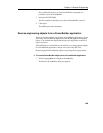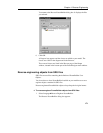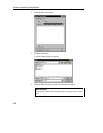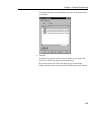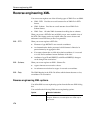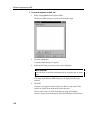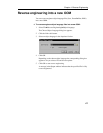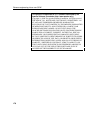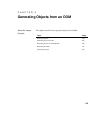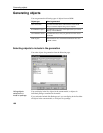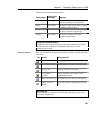
Reverse engineering XML
174
Reverse engineering XML
You can reverse engineer one of the following types of XML file to an OOM:
♦ XML - DTD Provides an overall structure for an XML file in DTD
format.
♦ XML - Schema Provides an overall structure for an XML file in
Schema format.
♦ XML - Data All other XML documents describing data or schemas.
When you reverse a DTD file into an OOM, you get more readable view of
the DTD. This feature can be very helpful when you want to observe and
understand a new DTD that you have not generated.
When you reverse engineer a DTD file:
♦ Elements of type #PCDATA are reversed as attributes.
♦ An element that has both a parent and a child element is linked to its
parent element by an aggregation link.
♦ If an empty element has no child object but has attributes, it is reversed
as a class and its attributes become attributes of the class.
♦ Attributes of type ID and IDREF(S) with ID and IDREF(S) datatypes
can be changed into associations.
When you reverse engineer an XML - Schema file:
♦ <type> elements are reversed as classes.
♦ An <element> not declared as <type> is reversed as an attribute.
The XML Mapping in the XOL file defines which element becomes a class,
an attribute or an association.
Reverse engineering XML options
You define XML reverse engineering options from the Reverse XML dialog
box.
You can define the following XML reverse engineering options:
Option Result of selection
Create symbols Creates a symbol for each reversed XML object in the
diagram. Otherwise, reversed objects are visible only in
the browser
XML - DTD
XML - Schema
XML - Data






